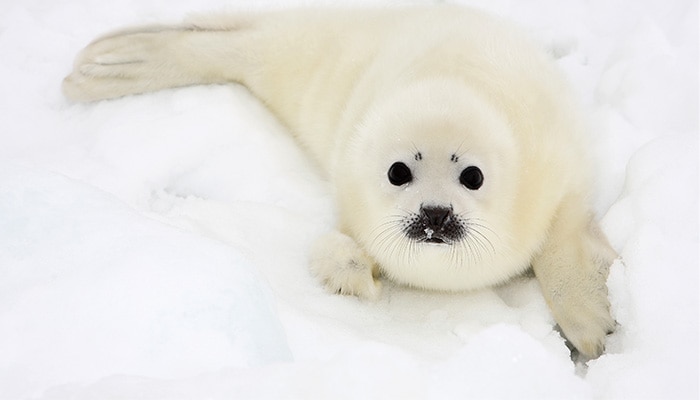While we believe that the books and resources recommended may be of value to you, keep in mind that these are suggestions only and you must do your own due diligence to determine whether the materials are appropriate and suitable for your use. PNC has no sponsorship or endorsement agreement with the authors or publishers of the materials listed.
WINTER

Blubber Glove
Children will explore how animals stay warm in winter.

Lesson Objective
Children will experiment with icy water to explore how animals stay warm in winter.
ScienceArtMusic
What You'll Need
- Resealable freezer bags – 12
- Resealable bags – 1 per child
- Solid shortening – enough to fill 8 resealable freezer bags
- Duct tape – 1 roll
- Water resistant tape – 1 roll (optional)
- Ice cubes – 1 per child
- Water table filled with ice and cold water (see Lesson Tips)
What To Do
Note: Prior to the start of the lesson, fill eight resealable freezer bags with shortening. Use the duct tape to tape two bags together on three sides, creating a glove. Leave the fourth side open for the children to place their hand in between the two bags. Make four sets of these “blubber gloves.”
- Discuss ways the children prepare to go outside on a cold day in the winter (putting on coats, hats, mittens, etc.).
- Explain how animals get ready for the cold winter (see Did You Know?).
- Tell the children they will be performing an experiment to explore how some animals stay warm in the winter.
- Distribute one empty resealable bag to each child. Have them put one hand inside the bag and place an ice cube on the bag.
- Explain that the bag is like the animal’s skin—not much protection from the cold.
- Display the bags filled with shortening (the “blubber gloves”) and explain that the shortening is like blubber on an animal (see Did You Know?).
- Place each set of two shortening-filled bags that have been taped together (the “blubber gloves”) inside a third resealable freezer bag.
- Have the children place their other hand inside a blubber glove, between the bags of shortening. Secure the bag around their wrists (e.g., with duct tape or water resistant tape).
- Have them plunge their hands, one inside the empty bag and the other hand in the “blubber glove,” into the ice and water. Give each child a turn with the blubber glove.
- Discuss which hand could remain in the icy water the longest (see Guiding Student Inquiry) and why (see Did You Know?).
Resources
Home School Resources
Home educators: use these printable lesson PDFs to teach this lesson to your home schoolers. They're available in English and Spanish.
Content Provided By
Common Core State Standards Initiative – These lessons are aligned with the Common Core State Standards ("CCSS"). The CCSS provide a consistent, clear understanding of the concepts and skills children are expected to learn and guide teachers to provide their students with opportunities to gain these important skills and foundational knowledge [1]. Visit the CCSS


